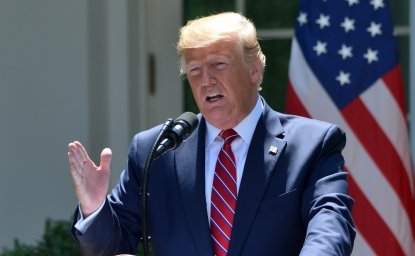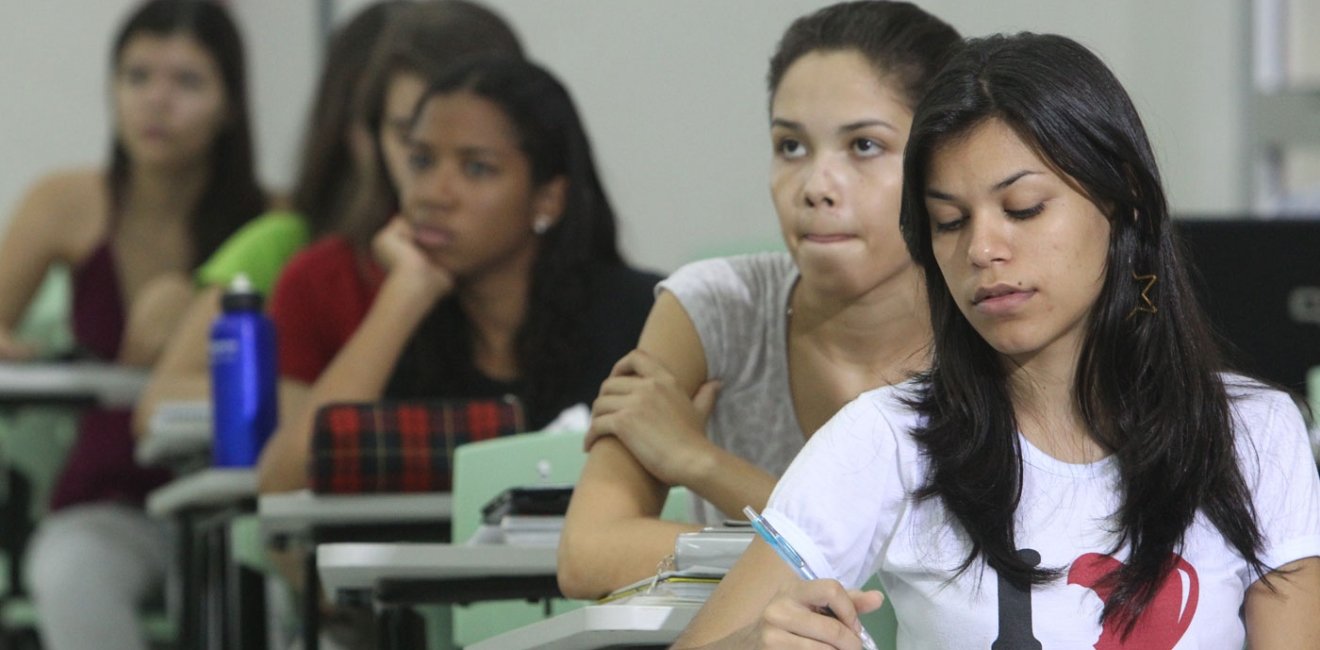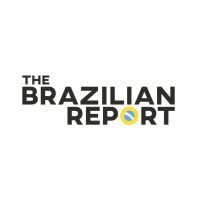
A blog of the Brazil Institute
Camilo Santana, a former governor of the northeastern state of Ceará, took office as Brazil's new education minister this week. Upon formally accepting his new post, he mentioned a sense of urgency to allow the "recovery" of the country's educational framework, accusing the prior administration of "ravaging" Brazilian education.
Indeed, during the Jair Bolsonaro government, the Education Ministry was at the center of scandal and controversy due to budget cuts, ideological moves, and corruption allegations.
His prior experience in Ceará was a major selling point for Mr. Santana getting the cabinet seat. The northeastern state is known for having what is arguably Brazil's most successful education model, achieving some of the country's most impressive results.
Despite having only the 17th-highest human development index among Brazil's 27 states, Ceará ranked third in the basic education development index (Ideb) among early elementary students in public schools — and first for the late elementary stage. These two periods span from early childhood to 14 years of age, on average.
Of the 100 best Brazilian public schools for the early years of elementary education, 87 are located in Ceará.
Last year, a study highlighted that Ceará has 18 municipalities among the 20 best-scoring on Brazil's Ioeb education opportunities index. The state's cities of Sobral and Cruz were tied for first place in the national ranking.
"Ceará is an important example of how to overcome adverse socioeconomic conditions to substantially improve education results, by way of the efficient use of resources," reads a World Bank report from 2020. "Ceará's municipalities are highly efficient in their use of funds to generate results in education, as they invest less than one-third of what the richest Brazilian states do, and even so, they achieve better results."
In a clear push to replicate the Ceará model on a Brazilian scale, Mr. Santana has invited former officials from his home state to work under him at the Education Ministry. His deputy minister will be Izolda Cela, Ceará's former education secretary who also put in a brief spell as state governor last year. Fernanda Pacobahyba, Ceará's former finance secretary, will lead the National Education Development Fund (FNDE).
Interestingly, the "Ceará revolution" was a relatively quick one. As recent as 2005, the state's educational performance ratings were below the national average, ranking 18th out of 27 states.
Ceará's recipe for success
The origins of Ceará's state-wide educational leap began on a more granular level, in the city of Sobral. Roughly one-tenth the size of state capital Fortaleza in population terms, Sobral currently has the country's best basic education results according to Ideb.
Mayor of Sobral in the early 2000s, Cid Gomes took the model statewide when he became Ceará governor in 2007 — Camilo Santana and Izolda Cela continued and expanded upon the project.
In summary, the key to Sobral's education success was giving schools financial and management autonomy, scrapping the political appointment of coordinators and administrators and leaving those choices up to the school community itself. The number of schools was reduced, which helped optimize resources, logistics, and availability of teachers.
The local administration made continued investments in teacher training and refresher courses, while also applying regular assessments to measure the quality of classes and student learning.
When the model was brought state-wide, administrators set up an exchange program between municipalities. The best-performing schools were encouraged to set up workshops and training with the least successful facilities, receiving increased funding in return.
Finally, educational results were taken into account for the distribution of Ceará's tax revenue, adding an extra incentive for municipalities to help schools perform well. The better their test scores, the more money the city would get from the state pie. At least eight other Brazilian states now use the same revenue distribution model.
Furthermore, Ceará will implement a new incentive this year to universalize full-time education by 2026, setting aside BRL 2,000 (USD 365) per student for municipalities to achieve this target.
The division of educational responsibilities between state and cities is the aspect that intrigues experts the most, being a model that could also go federal, as advocated by education NGO Todos pela Educação (All For Education).
"With the new ministry led by Camilo Santana and Izolda Cela, it is to be expected that the federal government will once again coordinate a national literacy policy, in articulation with states and municipalities, using Ceará as a reference and the Education Ministry as an inducer of state policies," said NGO director Olavo Nogueira.
Department changes already took place before Mr. Santana became education minister, most notably the appointment of Ms. Pacobahyba to lead the FNDE.
The fund's hefty budget has long been coveted by politicians and is often the subject of corruption scandals. Indeed, embezzling funds from the FNDE brought an end to the tenure of former Education Minister Milton Ribeiro, who was caught on a leaked recording saying that he prioritized transfers to municipalities suggested to him by evangelical pastors — and that he was following orders from former President Jair Bolsonaro.
The scheme reportedly involved the payment of bribes in gold bars, often concealed within copies of the Bible.
Challenges abound
President Luiz Inácio Lula da Silva has promised that literacy and basic education will be priorities to his nascent government. A Unicef study released last year showed that more than 5 million children were out of school at the end of 2020 — and almost half of them were aged between six and ten, a crucial stage for learning. Rates of school evasion hit alarming levels during the Covid pandemic.
Reading and math skills of Brazilian schoolchildren aged 7 dropped in 2021 in relation to 2019, according to data from standardized tests conducted by the Education Ministry. The exams were administered late in 2021 in roughly 72,000 public and private schools attended by around 5.3 million students.
Fifth- and ninth-graders also experienced drops in reading and math, but less pronounced than those among younger students.
The Education Ministry said that last year’s tests took place in an “atypical educational context imposed by the Covid pandemic, which, in addition to the period of suspension of teaching activities, led most schools to adopt new teaching mediations and to review their curricula and criteria.”
In 2020, Brazil was the country where schools were closed the longest due to the pandemic, among those surveyed by the OECD. Schools remained shut for almost 180 days that year, compared to the OECD average of 44 days. The government adds that “setting up effective remote learning strategies is particularly difficult for young children.”
Students’ worsening performance echoes government findings from the latest school census published early last year. The census also shed light on how deep the impact of Covid has been on Brazilian education.
The percentage of school-age children and teenagers attending classes dropped among those aged 5 to 13. Attendance increased for students aged 15 to 17, who were more equipped for the challenges of remote learning.
Income, place of residence, ethnicity, and the education level of parents are directly linked to grade repetition and school evasion. A São Paulo student living in an urban area and whose family is headed by a white male has twice the probability of finishing elementary school than more vulnerable students. That difference is five times in Espírito Santo, the most uneven state.
Despite the pandemic-led hiccups, Brazil has invested much more in education and has kept its teenagers and children in school for longer. However, workers’ productivity has stalled over the past 40 years. Argentina and Chile — countries with much lower GDPs but higher human development indexes — have much higher productivity levels.
With Camilo Santana given the top job in education, the experience in Ceará is certain to guide national plans — and Lula will hope to see an improvement in national indicators.

Like the content? Subscribe to the Brazilian Report using the discount code 100DAYS to get 20 percent off any annual plan.
Author

Brazil Institute
The Brazil Institute—the only country-specific policy institution focused on Brazil in Washington—aims to deepen understanding of Brazil’s complex landscape and strengthen relations between Brazilian and US institutions across all sectors. Read more

Explore More in Brazil Builds
Browse Brazil Builds
Brazil 100

They're Still Here: Brazil's unfinished reckoning with military impunity



